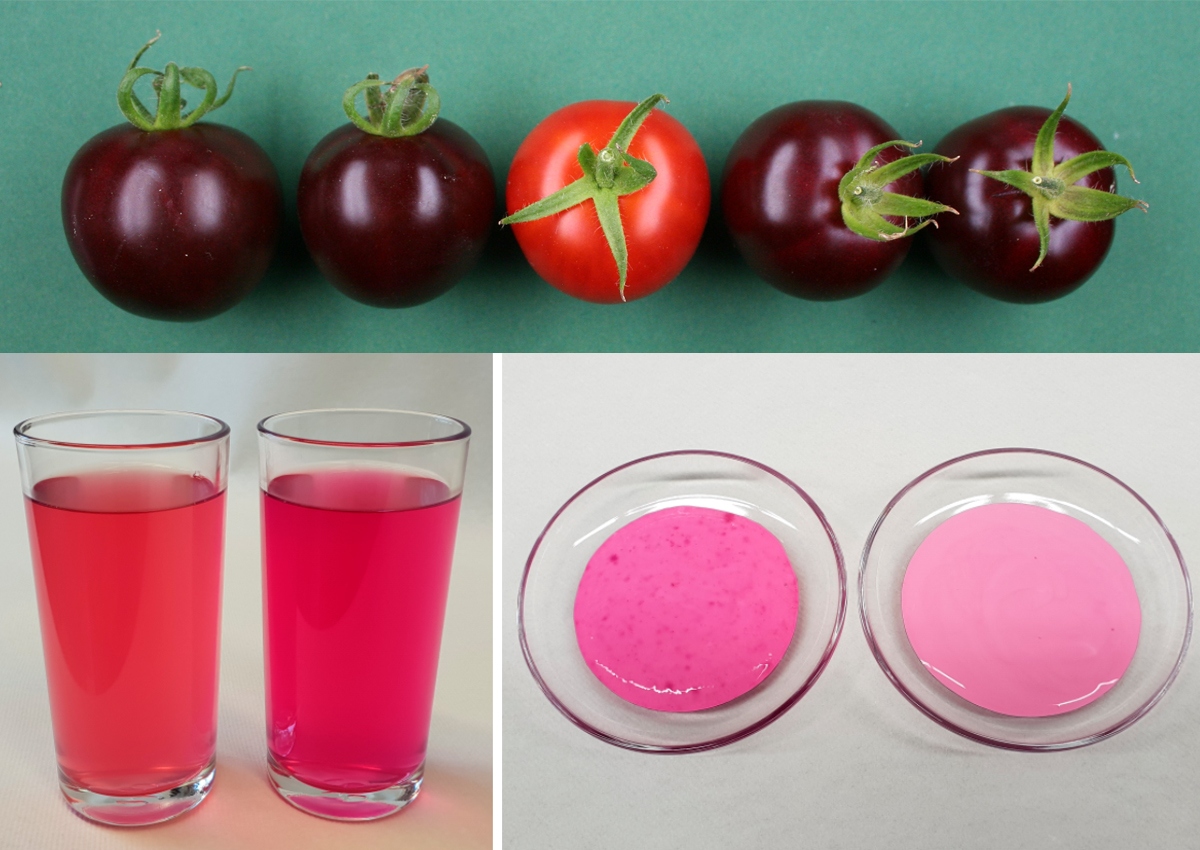
Genetic Engineering and Beetroot Dye Tomatoes Purple
October 6, 2021| |
Scientists at the Leibniz Institute for Plant Biochemistry (IPB) in Halle have used genetic engineering methods to produce purple tomatoes using dye from beetroot.
The scientists smuggled the genes for the biosynthesis of betanin into the plants and activated them in the ripening fruits. Betanin is not originally formed in tomatoes and comes from beetroot as a natural food coloring. Like many dyes, betanin has a strong antioxidant effect. The purple fruits produced could also serve as a source of betanin for food coloring. First attempts to color yogurt and lemonade with tomato betanin were promising.
The study is aimed towards further development of genetic engineering methods, which can be analyzed with the production of a clearly visible dye. In the case of betanin, planning and readjustment was carried out for a long time in order to achieve the desired synthesis performance in tomatoes. The Halle-based scientists not only brought three biosynthesis genes required for betanin production into the tomato plants but also several genetic switches with which the genes introduced could only be activated in the fruit and all of them at the same time, exactly at ripening time. However, betanin production in the fruits was initially low and the research team had to introduce a fourth gene, that the biosynthesis of the dye could be sustainably increased. The result is deep purple tomatoes that contain even more betanin than beetroot.
For more details, read the news article on the IPB website.
| |
You might also like:
- Award-winning Purple Tomato to be Released in China in Disney Packaging
- GM Purple Tomatoes Harvested in Canada
- Anthocyanins Double the Shelf Life of Tomatoes
Biotech Updates is a weekly newsletter of ISAAA, a not-for-profit organization. It is distributed for free to over 22,000 subscribers worldwide to inform them about the key developments in biosciences, especially in biotechnology. Your support will help us in our mission to feed the world with knowledge. You can help by donating as little as $10.
-
See more articles:
-
News from Around the World
- Nobel Prize in Physics 2021 Goes to Three Laureates for Climate Work
- "Scientific Consensus" Counters False Beliefs on GM Foods, Study
- USDA Deregulates Corn for Phytase Production Developed Using Genetic Engineering
- Calyxt to Develop Better Soybean Oil as Palm Oil Alternative
- Australian OGTR Receives License Application for GM Wheat and Barley Field Trial
- UK Government Gets Support of Scientists After Decision To Ease Gene Editing Rules
- Genetic Engineering and Beetroot Dye Tomatoes Purple
-
Research Highlights
- Researchers Discuss Transporters and Transcription Factors Involved in Rice NUE
- Improving Plant Growth and Biomass by GA20ox Overexpression
- GE Canola That Produces DHA Passes Food and Feed Safety Study
-
Plant
- Study Reveals Role of OsFtsH2 in Chloroplast Development in Rice
-
Health
- Vaccines Cut Delta Transmission But Not for Long
-
Read the latest: - Biotech Updates (November 26, 2025)
- Gene Editing Supplement (November 26, 2025)
- Gene Drive Supplement (February 22, 2023)
-
Subscribe to BU: - Share
- Tweet

